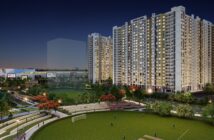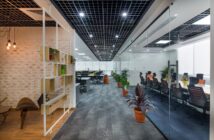Wellness real estate refers to buildings proactively designed and constructed with an occupant’s holistic health in mind. But the question is how important is the concept of wellness & lifestyle in the Indian housing projects?
A Track2Realty survey asked this to find 92% Indians believe the concept of wellness is as important as the need for a house of one’s own post the pandemic. What is the understanding level of wellness? Unfortunately, not many Indians, only 34% respondents, have ideas of wellness features and holistic living.
And how much premium would the Indian home buyers pay for the same? Well, the study noted that it depends upon the segment of the housing. While the luxury home buyers who already have access to better health & wellness concepts/products would pay 10%, as against the 15% premium that an affordable home buyer would pay.
But in between these two extreme ends of the property landscape are the real spender of health & wellness. While the mid-income home buyers would pay 22% premium, the buyers of mid-to-upscale aspirational homes would pay as much as 28% premium to avail the combo pack of holistic living that could goad them to fitness, nutrition and personal care.
The question is whether the real estate developers are listening. Are they inclined to stand out as wellness real estate brands? Do they aspire to create wellness communities around their real estate projects? Is it worth spending to create wellness homes?
Facts speak for themselves
-
A report by the Global Wellness Institute says the international wellness market is worth $4.2 trillion
-
This amount is more than half of the world’s total health spending
-
Fitness, Personal Care & Nutrition falls into the 10 most lucrative industries
-
Wellness real estate market is valued at $134 billion, which is 1.5% of the world’s construction industry and about half of its green construction industry
-
Global wellness real estate market is expected to touch $197 billion by 2022
Evolving Concept
Aditya Kushwaha, CEO & Director of Axis Ecorp points out that healthy living has many aspects to it – one of them is the location and the green cover around the building. Another important factor is the materials that are being used during construction. In the past few years, there has been a gradual shift towards sustainable living. The demand for houses that have embraced the concept of sustainable living has shot up.
“Projects that offer easier accessibility to health centres, yoga centre, swimming pools et al also come under the gamut of healthy living. There are many housing projects that have all these facilities within the complex. The real estate developers have been including some or all of these features for a while now and they were being projected as a great add-on. But in the post pandemic world most home buyers are preferring projects that enable healthy living. Given this trend, people are also looking for houses that are away in quaint places and closer to nature,” says Kushwaha.
Aditya Kedia, Managing Director, Transcon Developers believes that having spent more time indoors due to the pandemic, consumers today have started understanding the connection between health and home in a way that they didn’t comprehend prior to the crisis. Keeping the occupant’s health in mind, real estate developers are also emphasizing on this concept by focusing on aspects like biophilic designs or pollutant-free home environments.
“Some of the wellness concepts that are being incorporated in the Indian housing market include, vertical gardens or green walls accentuating the buildings facades, water bodies like cascading fountain waterfalls, lakes or artificial ponds around the vicinity of the project, green landscapes like gardens and flower beds both indoors and outdoors and sustainable practices like organic farming within the projects. Homes designed with such wellness aesthetics will facilitate in increasing the inhabitant’s longevity,” says Kedia.
Emerging trends in wellness real estate
-
Globally developers are experimenting with biophilic designs and amenities like water and air filtration systems that remove pollutants, allergens, and toxins
-
The technology syncs lighting with residents’ circadian rhythm, producing energizing light in the morning and melatonin-enhancing light in the evening
-
There is even posture-supportive flooring and surfaces that destroy bacteria
-
From meditation rooms and infrared saunas to vitamin C-infused showers and electromagnetic shields, the list of upgrades is long and growing
Luxury Power Play
This raises a fundamental question as to whether wellness is possible only with the luxury housing or affordable housing too can incorporate it. Within the built environment of the Indian real estate it is generally accepted that wellness is an aspiration concept but it can be incorporated into affordable housing as well. This would require focusing on some of the key elements right from the planning stage. Some of the real estate companies with international exposure are now working towards cutting down their carbon footprint apart from focusing on the other aspects of wellness.
The upscale residential developments are incorporating wellness components like circadian lighting, spas, communal garden spaces, and gyms. However, the demand is also coming from middle and upper-middle-class consumers, keen on residing in homes and communities that support a healthy and balanced lifestyle.
The industry has been witnessing an increased demand for wellness design in the affordable housing segments. Real estate developers catering to these segments are increasingly being forced to cater to the consumers by considering wellness design as a priority.
Amit Modi, Director of ABA Corp makes an interesting point when he says that from an earlier understanding of having mere trees planted within a project, wellness conscious homebuyers are now asking relevant questions related to green building ratings a developer has applied for with his project. There is no doubt about the fact that in housing every feature, amenity, infrastructure addition or service comes with a cost, both in terms of implementation cost as well as an ongoing variable cost in terms of its maintenance. Hence, while it may not be just a luxury housing play, but the cost factor does matter while implementing features, amenities or services related to wellness.
“While a smart play around planting self-sustained plants in an affordable group housing project can be made, but implementing features like drip irrigation supported vertical garden from ground to top floor, planting trees in every apartment balcony or getting Platinum Green Building Ratings can only be sustained in an ultra-luxury offerings, where the home buyers are not just appreciative of such measures, but also willing to pay infrastructures add-ons required to implements such features,” says Modi.
The concept of wellness real estate is relatively new in this part of the world. But there is a considerable opportunity for wellness real estate to emerge as Indian homes are one of the most significant assets that the buyers capitalize on all through their lives. Post pandemic one of the marketing USPs would be investment in refining our health and wellbeing. With an increase in consumer demand to invest in wellness-infused spaces, developers prima facie are focussing on creating spaces that truly foster the occupants’ well-being, evoking senses of comfort and peace.
Ravi Sinha
@RaviTrack2media
Track2Realty is an independent media group managed by a consortium of journalists. Starting as the first e-newspaper in the Indian real estate sector in 2011, the group has today evolved as a think-tank on the sector with specialized research reports and rating & ranking. We are editorially independent and free from commercial bias and/or influenced by investors or shareholders. Our editorial team has no clash of interest in practicing high quality journalism that is free, frank & fearless.
Subscribe our YouTube Channel @ https://bit.ly/2tDugGl





